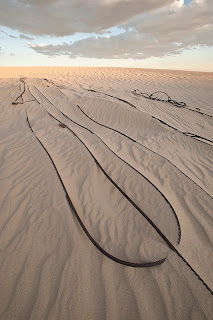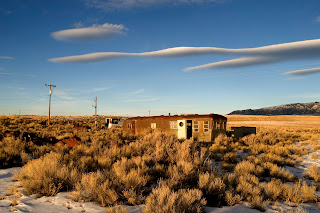Wind.
Wind.
And more wind. December 31, 2011.
Despite the 70 mph wind gusts, I decided to go out and shoot some photos in the Laramie Basin this morning. Wind has been the weather story here lately and, for that matter, since the Pleistocene. But the strength of it was a little above average today, threatening to rip the door off of my truck if I forgot to pay attention and hold on with both hands when I opened it. My first destination was the Laramie River north of town. The river is frozen of course, and since we've had no snow to speak of, the ice is clean. One of these days I'm going to take a pair of ice skates out there and see how far I can go. But not in this wind.
On the way back towards town, I saw lots of plastic snared on barbed wire trying hard to escape to follow the wind east, but not having any luck. Over the years I've made a series of images of plastic stuck in wire, and sometime I'm going to organize them into set of images to show, even if only for myself.
I finished my morning trip exploring the old Standard/Midwest refinery in West Laramie, which will be the subject of another post. Finally, with frozen hands I headed for home. It's been a great year and what better way to spend the last day than shooting photos in the Laramie wind?
I'm not kidding.














































